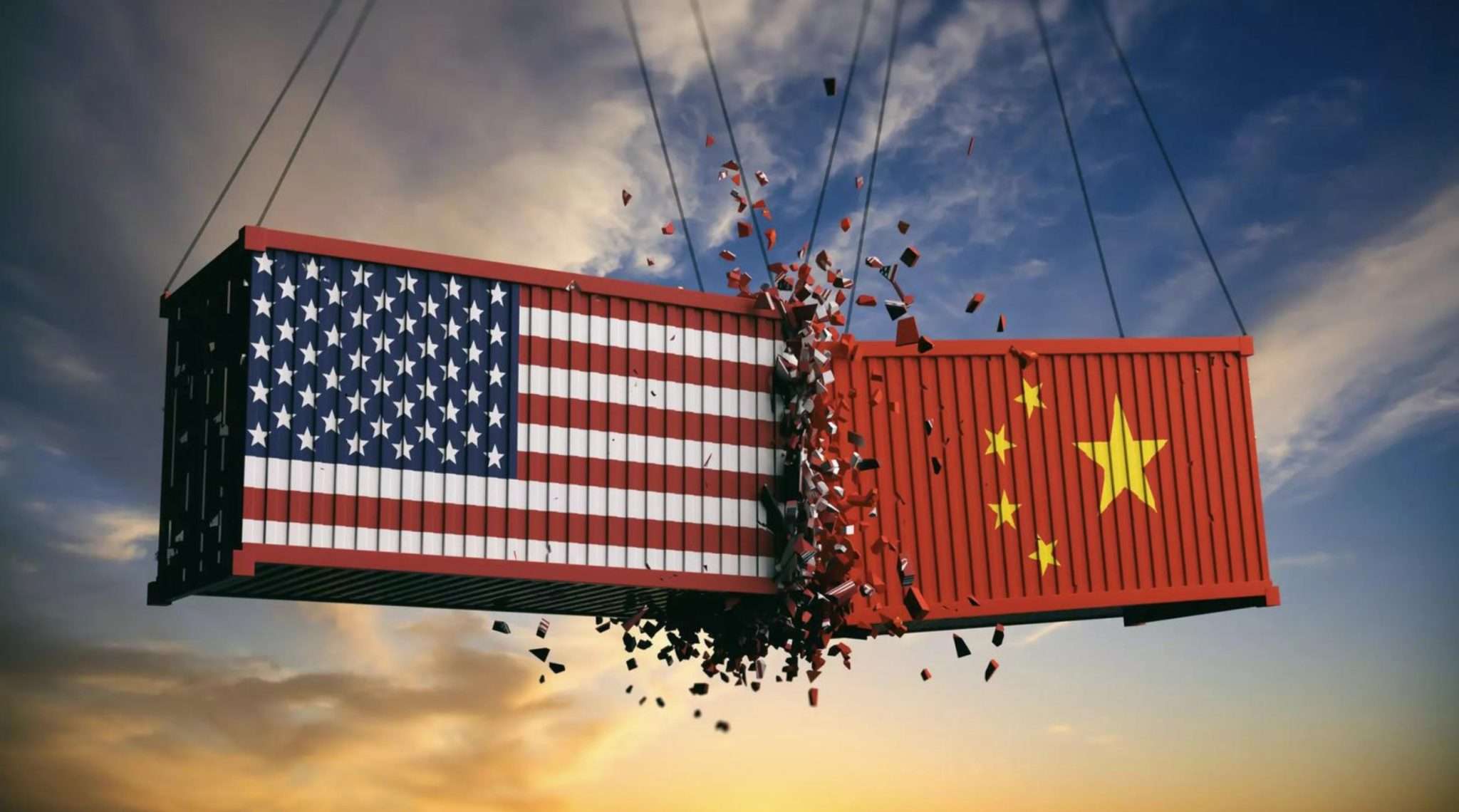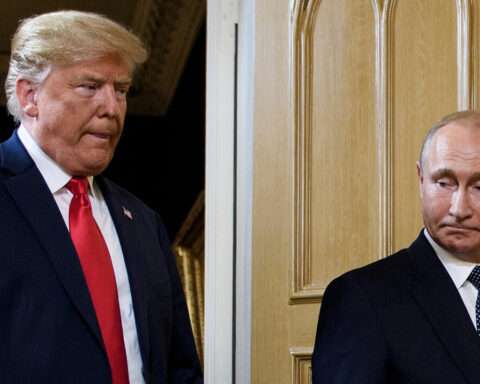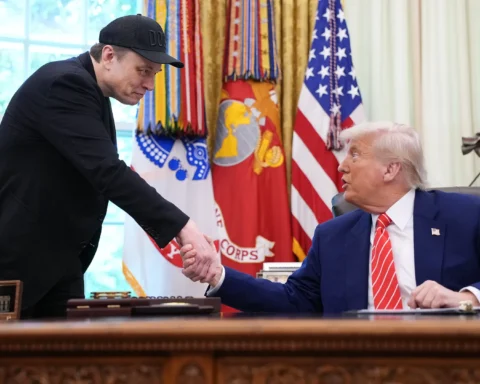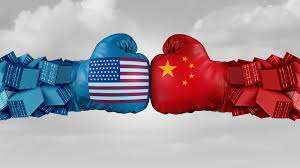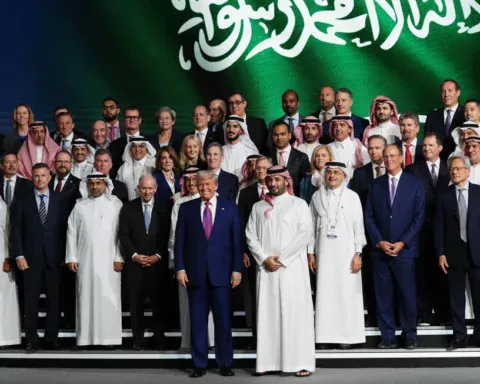President Donald Trump has set the stage for a seismic shift in global trade by announcing that new tariffs on several nations could take effect in as little as two to three weeks, reigniting fears of a trade war that could destabilize the U.S. and global economies.
The move, described as a bold escalation of his “America First” economic agenda, targets countries like China, Canada, and Mexico with steep levies, prompting a flurry of legal challenges, market volatility, and international backlash.
As businesses brace for higher costs and consumers face the specter of rising prices, the world watches to see whether Trump’s tariff strategy will deliver economic strength or sow chaos.
On April 24, 2025, the announcement sent shockwaves through financial markets and diplomatic circles alike. Trump’s decision to press forward with what he calls “reciprocal” tariffs—though critics argue the term is misleading—follows a brief pause on April 9, when he suspended similar measures for 90 days to allow for negotiations.
The pause, hailed by some as a tactical retreat, appears to have been short-lived, with the president now signaling an aggressive timeline for implementation. The tariffs, which include a staggering 145% duty on Chinese imports and a 10% baseline on nearly all U.S. imports, are poised to reshape trade dynamics, but at what cost?
A Legal and Economic Firestorm
The tariff announcement has sparked immediate pushback, with twelve U.S. states, led by New York, filing lawsuits to block what they call an unconstitutional overreach. The coalition, which includes Arizona, Colorado, Connecticut, and others, argues that Trump’s tariffs bypass Congress, violating the Constitution and federal law.
New York Governor Kathy Hochul called the tariffs “the largest federal tax hike in American history,” warning of “economic chaos” for consumers already grappling with inflation. Attorney General Letitia James echoed this sentiment, stating, “The president does not have the power to raise taxes on a whim.”
Economists, too, are sounding alarms. The Federal Reserve, led by Chair Jerome Powell, has warned that the tariffs could lead to weaker growth, higher unemployment, and faster inflation—a toxic trifecta not seen in decades.
Powell described the policy as “unlike anything seen in modern history,” placing the Fed in “uncharted waters.” Forecasts from Allianz predict unemployment could rise to 5% by early 2026, with inflation spiking as companies pass on higher costs to consumers.
The financial markets, often a barometer of economic sentiment, have been unforgiving: between April 2 and April 9, the Dow Jones Industrial Average shed 11%, the S&P 500 dropped 12%, and the NASDAQ fell 13%.
The Clock Starts Ticking for Tariffs
Trump’s decision to “start the clock” for new tariffs marks a critical juncture in his second term. On April 9, he paused his initial round of “reciprocal” tariffs, which included 25% levies on aluminum and steel, 25% on non-compliant goods from Mexico and Canada, and the headline-grabbing 145% on Chinese imports.
The reprieve was meant to give countries time to negotiate trade deals, but with talks faltering, Trump now appears ready to pull the trigger. “We’re going to make America rich and strong again,” he declared, framing the tariffs as a tool to bolster domestic manufacturing and reduce reliance on foreign goods.
Yet the specifics remain murky. It’s unclear whether the new tariffs will replace the paused measures or serve as interim penalties while negotiations continue. For China, the stakes are particularly high, with the 145% duty threatening to cripple trade.
U.S. Treasury Secretary Scott Bessent has hinted at a possible de-escalation, acknowledging at a private JP Morgan Chase conference that the trade war with China is “unsustainable.” However, White House press secretary Karoline Leavitt doubled down, insisting there would be “no unilateral reduction” in tariffs until a new trade agreement is reached.
Global Ripples and Corporate Pushback
The international response has been swift and sharp. China, facing deflation and a struggling real estate market, has warned other nations against curbing trade with Beijing to gain tariff exemptions from the U.S. Such moves, the Chinese government said, would be “selfish and shortsighted,” promising retaliation.
Meanwhile, the European Union’s trade chief left Washington last week with “little clarity” on the U.S. stance, and Japan’s Prime Minister Shigeru Ishiba expressed “grave concern” over the tariffs’ consistency.
Businesses, caught in the crossfire, are scrambling to adapt. The tariffs have already prompted price hikes from companies like Shein and Temu, while others, like Guardian Bikes, are expanding U.S. manufacturing to avoid import duties.
Apple, a high-profile beneficiary of Trump’s selective reprieves, secured an exemption for iPhones after CEO Tim Cook personally lobbied the White House—an example that has other corporations clamoring for similar breaks. Retail executives, fearing higher consumer prices, have met with Trump to plead their case, but the administration’s response has been inconsistent, leaving many in limbo.
A Strategy Fraught with Contradictions
Critics argue that Trump’s tariff policy lacks a coherent narrative. Is the goal to protect American jobs, punish trading partners, or force new trade deals? The White House has offered conflicting signals. Senior adviser Stephen Miller called the tariffs part of “the greatest economic master strategy” in history, yet Trump’s own walk-back from the brink of an all-out trade war with China suggests uncertainty.
The New York Times described the policy as “ill-conceived and amateurishly executed,” warning that it risks damaging America’s global image while benefiting rivals like China, which could exploit trade disruptions to expand its influence in the Asia-Pacific.
Supporters, however, see the tariffs as a long-overdue correction. Indiana Representative Erin Houchin praised the policy for spurring job growth in her district, citing Guardian Bikes’ new manufacturing plant as evidence of its success.
Fox News contributor Gordon Chang argued that the tariffs are helping dismantle “fast globalization,” forcing companies to prioritize American production. “When the dust settles,” Chang wrote, “340.1 million Americans will be much better off.”
The Human Cost of Trade Wars
Beyond the headlines, the tariffs are poised to hit consumers hardest. Economists estimate the policy could act as a $1.2 trillion tax hike, with everyday goods like autos, energy, and food seeing sharp price increases.
The closure of the “de minimis” loophole, which allowed duty-free imports under $800, will further drive up costs for low-value goods. For working-class families, already stretched by inflation, the tariffs could mean tough choices at the grocery store or gas pump.
The geopolitical fallout is equally concerning. Trump’s tariffs have strained relations with allies like Canada and Mexico, risking the stability of the USMCA trade agreement.
In Asia, developing economies like Vietnam and Thailand face steep penalties, while wealthier partners like Japan and South Korea brace for lower but still significant duties. The tariffs’ “reciprocal” label, critics note, is a misnomer, as they often exceed the tariffs imposed by other nations on U.S. goods.
A High-Stakes Bet
As the clock ticks toward implementation, Trump’s tariff strategy remains a high-stakes gamble. Proponents see it as a bold move to restore American economic dominance, forcing companies to invest in domestic manufacturing and reducing reliance on foreign supply chains.
Critics, including liberal commentator Bill Maher, warn that Trump has “picked a fight with the wrong bully” in China, risking a recession to prove his point. The lawsuits filed by states, coupled with international resistance, could derail the policy before it fully takes effect, but Trump’s resolve appears unshaken.
For now, the world waits to see whether Trump’s tariffs will deliver the promised economic renaissance or plunge the U.S. into a self-inflicted crisis. Businesses are diversifying supply chains, consumers are bracing for higher prices, and diplomats are scrambling to avert a full-blown trade war.
The outcome will likely define Trump’s second term—and the global economic order for years to come.
Focus keywords: Trump tariffs, new tariffs 2025, U.S. trade war, China tariffs, global economy, tariff economic impact, Trump trade policy


